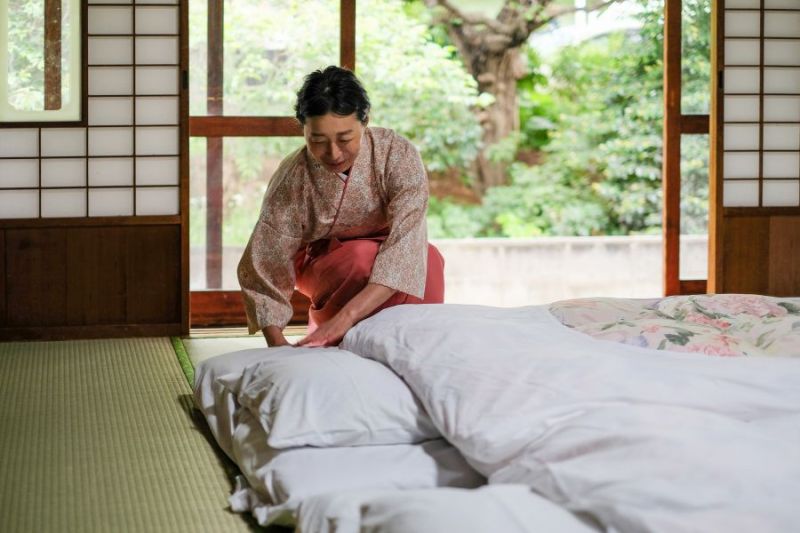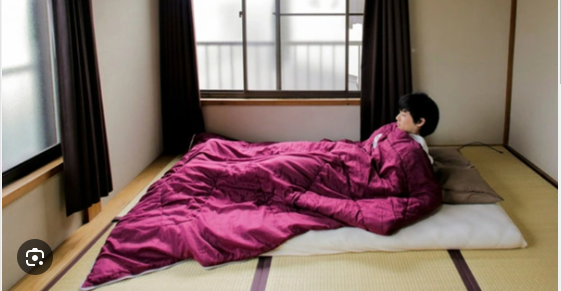While most Vietnamese people sleep on beds, the Japanese have a different preference. They opt for thin mattresses placed directly on the floor instead of using traditional beds. Let’s explore the reasons why sleeping on the floor is a common practice in Japan.
Why do Japanese people often sleep on the floor instead of on beds?
+ Space Utilization
In most Japanese households, you’ll find tatami mats, which are traditional straw mats with multiple purposes. These mats can serve as regular floor coverings or even sleeping areas. In a country where living space is often limited, using tatami mats for sleeping helps save space and optimize the living area. This practice also aligns with the importance of minimalism and neat organization in Japanese culture.

+ Cost-effectiveness
Instead of investing in a large and spacious bed, the Japanese only need to purchase tatami mats during the summer and blankets or futons for the winter. This practice helps them save money. Additionally, there are no extra costs associated with bed repairs or designs.
+ Early Earthquake Detection
Japan is prone to frequent earthquakes. Sleeping on a tatami mat allows individuals to quickly sense the vibrations of the earth more easily than if they were sleeping on a bed. This heightened awareness helps them stay alert and quickly get to safety. Sleeping on the floor also reduces the risk of injuries during an earthquake.
+ Safety for Children
When sleeping on mattresses placed on the floor, children are less likely to roll off the bed, fall, or bump into bed frames. This arrangement provides peace of mind for parents concerned about their children’s safety.
+ Bone and Joint Health
The Japanese believe that sleeping on a bed with a mattress can lead to uneven pressure on the bones and spine over time, potentially causing back pain and spinal curvature. Sleeping on a tatami mat, which has a firmer structure, is thought to help maintain the straightness of the spine and support bone and joint health.
In Japan, the tradition of sleeping on the floor dates back thousands of years and has been passed down through generations. The preference for sleeping on the floor over beds reflects both cultural and practical considerations.
Some drawbacks of sleeping on the floor

+ Placing mattresses directly on the floor can lead to potential issues with dust, bacteria, and harmful insects or mold. Without regular cleaning, these problems can impact your health.
+ For those unaccustomed to sleeping on mattresses without a bed frame, it can be uncomfortable and tiring. Additionally, sleeping directly on the floor can lead to feelings of coldness and discomfort upon waking, as the cool energy from the ground can affect your body.






























